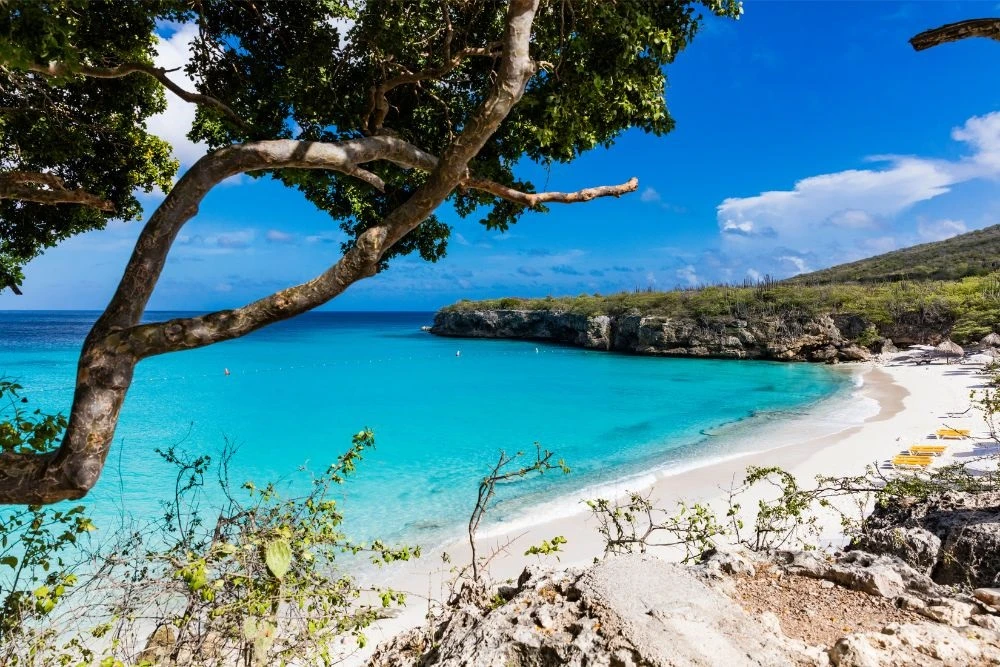
Most people associate Curaçao with turquoise seas, lively outdoor markets, and a splash of the island‘s world-renowned Blue Curaçao liqueur. However, many are now discovering the thrill of hiking in Curaçao, exploring its rugged landscapes and hidden gems beyond the beaches.
A hiker’s paradise with everything from undulating hills to rugged peaks, each presenting different difficulties and panoramic views, can be found beyond the well-known beaches and diving locations.
Hiking should be one of the activities you intend to do while visiting Curaçao. The island’s varied topography offers a number of routes that are suitable for hikers of all experience levels and interests.
A wonderful hiking experience in Curaçao is guaranteed by the tropical island’s distinctive geography, which has caverns, salt ponds, coral, limestone, and lush flora.
You might explore different hiking routes in Curaçao if you want something less strenuous. These pathways offer a wonderful opportunity to appreciate the island’s natural splendor. Families and casual hikers can use them.
Keep in mind that the terrain might vary widely when you set out on your hiking in Curaçao and that certain routes may get flooded during the rainy season. Planning ahead and preparing for exciting, perhaps muddy excursions are wise moves.
Things You Should Know Before Hiking In Curacao
Wildlife Spotting
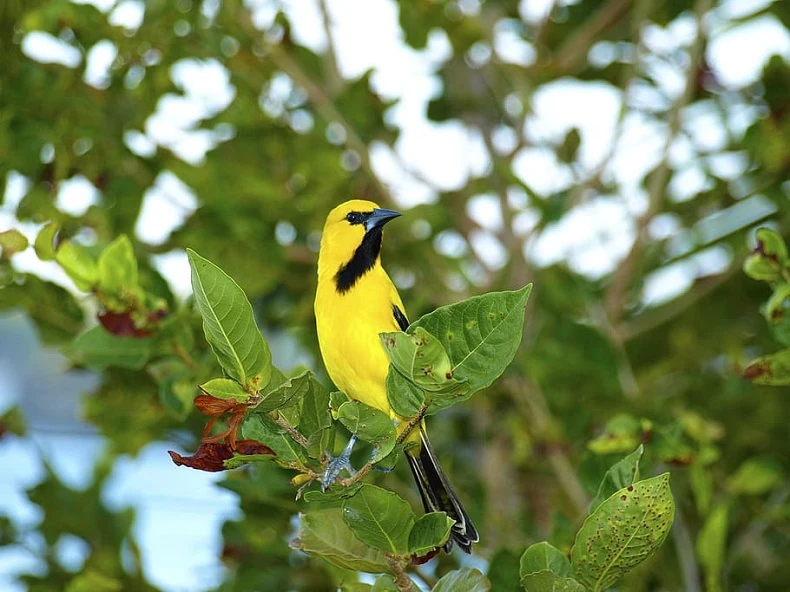
Hiking in Curaçao allows you to see a wide variety of animals, including birds, lizards, white-tailed deer, and flamingos. Every species inhabits the island’s natural beauty, providing distinct vistas.
Keep an eye out for the diversity of birds in Curaçao while you explore the paths. The island is a birdwatcher’s paradise with more than 200 different species of birds residing there. The Caribbean parakeet, the bananaquit, and the troupial are a few of the island’s most well-known bird residents.
Numerous kinds of lizards that live on the island of Curaçao may also be commonly seen along hiking trails. The gorgeous Curaçao whiptail and the blue-tailed lizard may dart across the trail or rest on surrounding rocks; keep an eye out for them.
The island is home to white-tailed deer in addition to birds and reptiles. Although it might be challenging to discover these timid animals, it is worthwhile to do so since they contribute to the captivating experience of Curaçao’s biodiversity.
Curaçao is also home to flamingos, one of the island’s most intriguing and aesthetically stunning natural species. They usually wander the island’s salt flats and lagoons, adding a distinctive splash of color and elegance to your trekking adventure.
Always protect animal habitats and practice responsible wildlife spotting while you enjoy your treks and come across these amazing species. This will guarantee you a positive experience and aid in safeguarding Curaçao’s varied population for future generations.
Practical Information
There are a few important factors to consider while organising your hiking excursion in Curaçao. The landscape of the island is diverse and includes limestone, salt ponds, and caverns.
The difficulty of your walk may, however, increase during the rainy season as you can come across flooded pathways and muddy conditions. Beautiful trails may be found on Curaçao, and many of them are listed on websites like AllTrails and Wikiloc.
You may obtain trail maps, driving instructions, and user reviews on these websites. They also provide images and other details to assist you in selecting the path that best suits your interests and level of experience.
In terms of hiking costs in Curaçao, some areas, notably national parks, may charge an admission fee. For instance, there is a cost to enter the Mt. Christoffel trek.
You must do the following in order to get the greatest experience possible:
- Check the weather before starting your walk.
- thoroughly investigate the appropriateness and complexity of the trail
- Be ready for potential admission costs.
- Make sure you have appropriate footwear and attire for the surroundings and the weather
- Bring enough water and food to keep yourself energized during your trek.
Safety and Climate
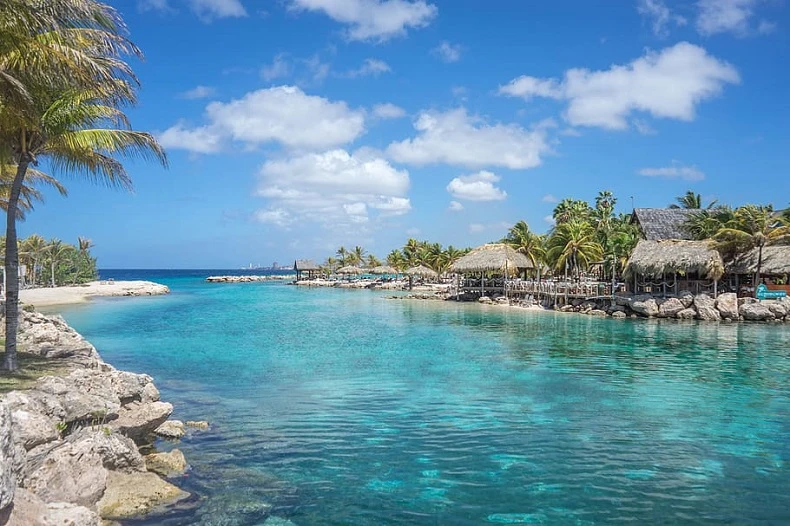
When hiking in Curaçao, keep the island’s safety precautions and climate in mind. The landscape is diverse and includes limestone, mud, coral, salt ponds, and caverns. Wearing the proper gear is essential, including waterproof walking shoes, a hat, sunglasses, sunscreen, and clothing with an SPF rating.
The average water temperature in Curaçao, an island in the Caribbean, varies from 79.5°F (26.5°C) in February and March to 84°F (29°C) in September and October. Maintaining hydration and avoiding the sweltering heat of the late morning and early afternoon can help you be prepared for the heat while planning your walks.
Finally, be environmentally conscious by avoiding leaving waste behind and by respecting the surrounding natural environment. Reduce your influence on the island’s distinctive and diverse ecology by properly disposing of rubbish.
You may enjoy your hiking excursion in Curaçao while being safe and maintaining its natural beauty by exercising caution and being knowledgeable.
Nature and Geography

Hiking in Curaçao will immerse you in a unique environment rich in flora and animals. Numerous cactus species have adapted to the island’s arid environment.
As you travel about, you’ll come across stunning and well-known native plants like the Divi-divi tree. It stands out in Curaçao’s landscape because to the way the strong winds have twisted the limbs into a peculiar form.
The majority of the island’s vegetation consists of unusual species created specifically for arid environments. In addition to cactus and Divi-Divi trees, the region is also home to acacia trees and a vast range of floral plants that give it colour and energy.
This exquisite variety of native vegetation makes for an absolutely amazing trekking experience in Curaçao.
The island of Curaçao has a variety of geological features, including limestone, coral, salt ponds, and caverns. Some of the island’s hiking trails even pass through remarkable geological formations that provide fascinating hints about the island’s past.
During wet seasons, certain paths may experience brief floods and muddy conditions; therefore it’s important to be ready and adaptive when hiking.
You could have the opportunity to see some of Curaçao’s diverse wildlife as you travel across its regions, from marine life to terrestrial creatures.
You’ll be astounded by how Curaçao’s natural ecology has developed and possibly even get a greater respect for the island’s sensitive ecosystems. So we’ve compiled a list of best places for hiking in Curacao.
Hiking In Curacao: Best Places For Hike
If you’re seeking for the greatest hiking in Curaçao, you can’t skip these paths. You will be amazed by the varied landscapes and one-of-a-kind experiences they have to offer. The top hiking Curaçao are listed below.
Christoffelberg
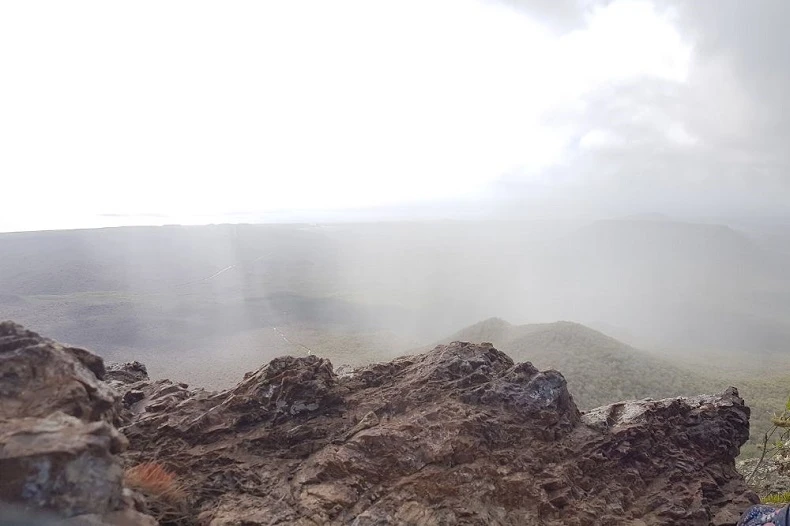
Difficulty level: Moderate to Difficult
Length of the trail: 3 to 5 miles round
Duration to complete: 2 to 4 hours
Plan a hike up Mount Christoffel, also known as Christoffelberg, if you’re searching for an hiking in Curacao and want to feel accomplished after lazing on one of the island’s magnificent beaches.
Curacao is well recognized for its wonderful beaches and year-round consistency in weather, but it also offers some intriguing trekking opportunities.
You’ll fly over some breathtaking land formations as you approach Hato Airport from Curacao. The most notable one is Mount Christoffel, also known as Christoffelberg, which is Curacao’s highest point. It is regarded as one of the Caribbean’s top hikes.
You will walk to Curacao’s highest point, Christoffelberg’s peak, which is an amazing 1220 feet above sea level. Particularly if you arrive in time for daybreak, the vistas are breathtaking. Oh, the sunrise. The day has a very early start. But I assure you, it’s worthwhile.
To avoid the sweltering sun and heat of the day, it is recommended to walk Mount Christoffel as soon as the park opens. If you walk that early, you will also get the chance to view the dawn, which was amazing to see from Curacao’s highest point.
Shete Boka National Park
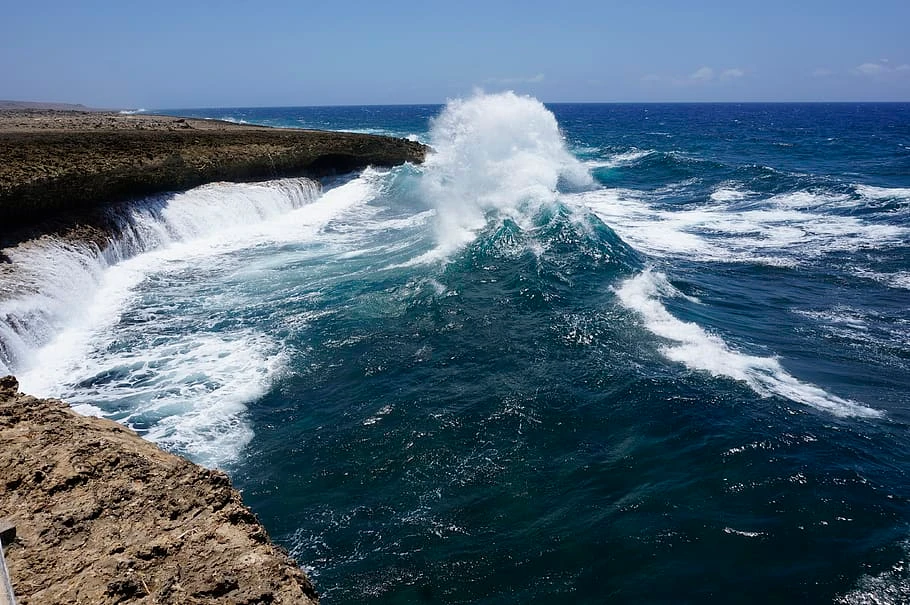
Difficulty level: Easy
Length of the trail: Varies; most trails are less than 1 mile
Duration to complete: 30 minutes to 1 hour per trail
The Shete Boka National Park allows you to appreciate the seaside landscape and unspoilt environment. There are ten spots of beach along the 7-mile trail, and three different species of turtles use the area to breed there.
A natural bridge and lovely caverns are a couple of the park’s highlights. Two walking/hiking trails in the park can both be completed in a single day.
It’s crucial to pack sturdy footwear for your walk. You occasionally have to climb up and down natural steps or walk on uneven ground. Don’t forget to pack sunscreen and a hat or other sun protection.
The park has been designated a no-drone zone, therefore drone use is regrettably prohibited. Both your camera and your phone can snap images. However, exercise caution because water may splash.
Bring some water or snacks with you for your walk. In addition, the visitors centre at the entrance has cool beverages for sale. Make sure to wear appropriate hiking attire.
Although hiking equipment is not required, it is advised that you wear sturdy, sun-protective clothing. Since the National Park is somewhat windy, we do not advise bringing a sunhat because it might blow off.
Blue Room Cave
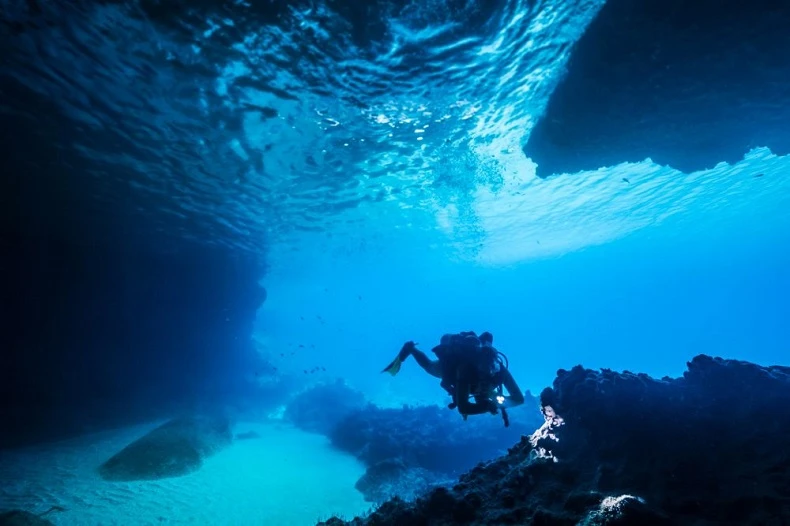
Difficulty level: Moderate
Length of the trail: Approximately 2.5 miles round trip
Duration to complete: 1.5 to 2 hours
It’s a hidden jewel, and that’s what makes the Blue Room Cave walk so magical. With beautiful views of the Caribbean Sea, the walk goes along the rocky shoreline as it leaves Santa Cruz Beach. Each tiny harbor and beach you travel through on your walk will be more picturesque than the one before it.
But the captivating Blue Room Cave, which is the true treat, is at the very end. The ethereal blue light that fills the cavern when sunlight reflects off the water’s surface gave this underwater cave its name.
It’s a strange sensation that makes you feel as though you’ve entered another universe, and the cave’s natural rock formations serve as the perfect backdrop.
Since swimming in the water is the only way to properly enjoy the Blue Room Cave, this trek provides a special combination of hiking and snorkeling.
So don’t forget to bring your snorkeling gear! This trip is a must-try for anybody searching for something different from Curaçao’s typical tourist attractions due to the climb and the underwater experience.
Salt Pans of Jan Thiel
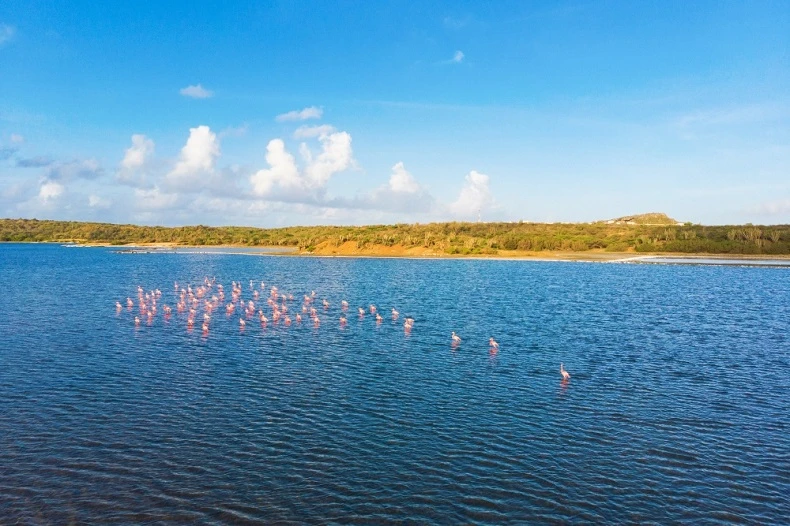
Difficulty level: Easy
Length of the trail: Approximately 2.5 miles
Duration to complete: 1 to 1.5 hours
One might question what made this island so unique since it was formerly a Dutch colony. In addition to being stunning, the island was abundant in salt, which was a very significant resource at the time. The renowned Jan Thiel beach is directly adjacent to the once-vibrant salt plantation known as Jan Thiel Landhuis.
Currently, the property has been renovated into a wonderful hiking track that takes you past spectacular greenery and lovely, delicate pink salt pans. In addition to showcasing the beauty of nature, it is a great location for mountain riding and bird viewing.
The route travels through an inland lagoon in some places and into the wilderness in others. The coral reefs may be explored when snorkeling in the seas off the shore.
St. Michiel Trail
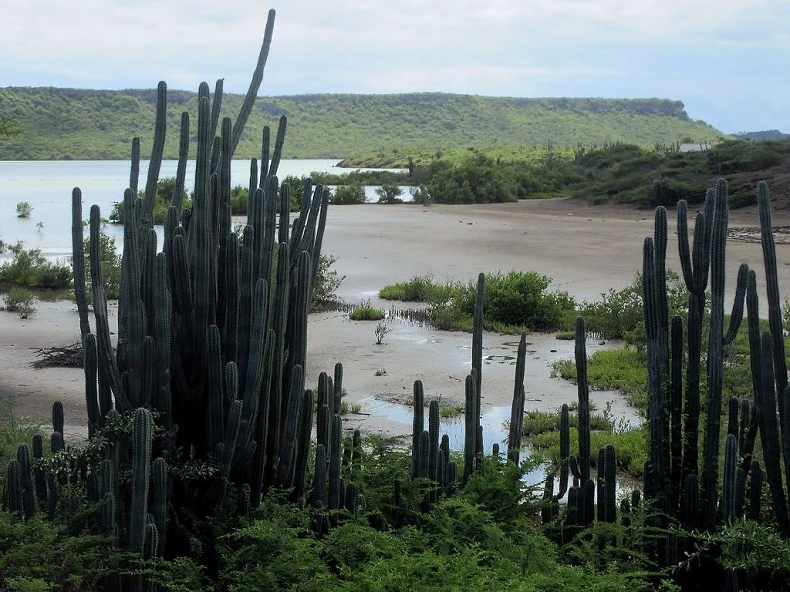
Difficulty level: Moderate
Length of the trail: Approximately 3 miles
Duration to complete: 1.5 to 2 hours
This magnificent walk begins beside the salia (salt lake) and ascends to Michelsberg’s summit, where you can see the salt pans. Flamingos now beautify the salt pans, which were once used for salt collection. People in big numbers may frequently be observed gathering along the water to hunt for food.
Wander through mangrove woods, take in the diversity of nature, and be in awe of the variety of migratory birds. Watch out for crabs as they navigate the muddy pans in quest of food. Just be careful not to attract too much attention or you risk scaring them back into their burrow.
Overall, the journey from the pans to Michielsberg is not particularly challenging. Although the path is wind-sheltered, a hot day can cause you to fry in the sun.
If you intend to start early, the views from the summit will be well worth the effort. The rectangular lines that originally marked the salt’s harvesting locations are still visible.
Use the time you have while at St. Michiel to explore the 1701-built Fort Sint Michiel amid the quaint fishing community. Formerly one of the cannons defending the harbor, the fort is now a free public attraction.
Conclusion
While Curacao is most well-known for its nightlife and vibrantly colored buildings, it is also a paradise for hikers and other nature enthusiasts. The island is alive with outdoor experiences because to its free-roaming island wildlife, pink salt pans, and coastline pathways.
Hiking in Curacao is the best decision you will ever make. Also, Curacao is a wonderful beach paradise with a nice network of hiking paths. Take a walk to see the most picturesque areas of the island when you’re not underwater exploring the reefs.
